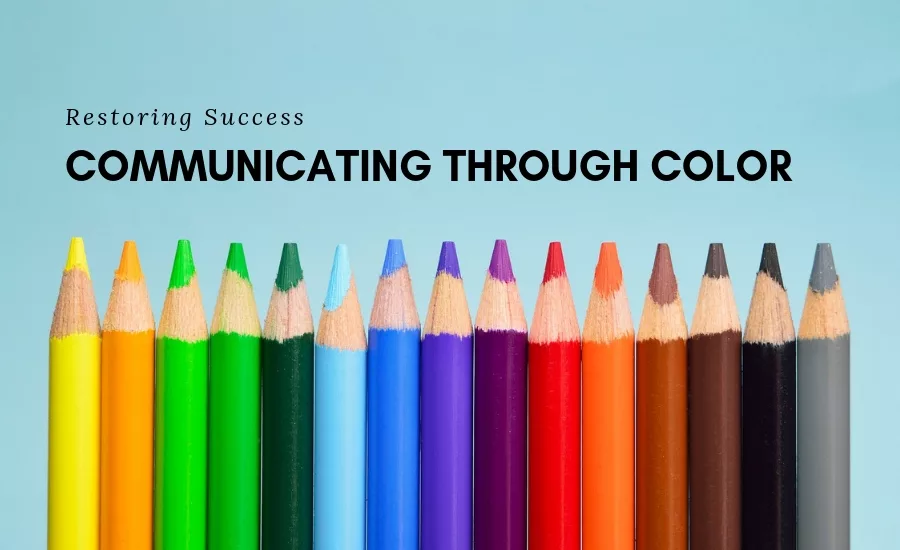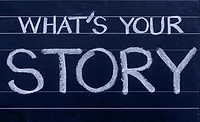Restoring Success: Communicating Through Color


As we juggle, move, and shake, we continually strive to have order and balance to our worlds built around chaos. There may be opportunity to bring a little more order to our worlds with the use of color. Learn more about the value on making your workplace colorful in the article, Workplace Color Coding Standards, where it is made clear some of the benefits of adding color to the operation and insights on where you can use them:
“Why do we use color to communicate? How much information in our daily life is actually displayed using color? In transportation alone, highways, traffic signals, pedestrian crossings and airports use color to organize information. Communicating this information using color standards keeps us safe and helps us make decisions quickly and more efficiently.
The purpose of color coding is to communicate without speaking. These types of visual communications help us convey a message clearly and without misunderstanding. Verbal communications leave a lot of room for interpretation, whereas visual communications remove the emotion and interpretation that commonly result in errors. Ultimately, color code standards eliminate time spent searching for information, and increase productivity in any workplace.”
The use of color can be endless. By coding project managers, job status, and even your inventory control solutions, you can bring some order with the application of color. Color can become a top consideration when problem solving and organizing. We are already programmed to recognize and behave based on color. Consider seeing a red trash bag; we immediately recognize it as “bio-hazard”, red means stop, green means go, and so on. Imagine some of the benefits to adding some more color to our day to day operations.
The Story of the Broom
When a new broom assigned to a water truck was mistakenly left on a job site, never to return to the truck again, the answer was clear, color!
The solution to the lost broom was that all small tools and items that should be on that particular truck are marked with blue tape and the corresponding inventory would list these items in blue. The blue tape did several things:
- Established the relationship with that particular vehicle. All small tools and items that go with that vehicle will now have blue tape on them.
- Established that it is an item that is not to be left on the job site (as opposed to a dehumidifier) and to be gathered and on the truck before leaving. A broom should never be left amongst your drying equipment. As we walk through the job site to make sure everything is neat and orderly, we are looking for anything with the blue tape. A quick visual double check.
- On the truck inventory sheet, posted on the truck, all small tools and items that are marked with blue tape, are printed in blue on the inventory sheet. This allows for a quick inventory check to verify that all the blue items are back on the truck where they belong before the team rolls away.
Getting Started
To get started with your own color-coding system, here is what you need:
- Colored tape
- Markers
- Stickers/Labels
- Initial legwork of creating/printing out lists, inventories, etc.
Here are some ways you can infuse a little color, which can go a long way:
- Key people: By color coding key job-related people, it may help keep all job things in order and also provide direction to co-workers as to a point person for information and direction on specific jobs. This could be especially helpful on large jobs with lots of employees and subcontractors.
-
Trucks/Work Kits/Tool Bags and multiple piece equipment:
- Use colored tapes to designate assignment and relationships.
- Color code the tool bag with all related tools.
- Color code hoses, small pieces/parts, equipment.
- Bar codes: If using bar coding systems, consider color in maintaining parent/child relationships. For example, a monitoring kit may have a green parent color bar code and the individual meters within the kit may have a purple child color bar code which allows the team to consistently scan and track equipment by the parent color, green, while allowing for the maintaining and tracking of the valuable child-level inventory items separately as well.
- Use colored tapes to designate assignment and relationships.
- Emergency On-Call Availability Board: In restoration, it is always good to know who is available to help out with emergencies. Team members can mark themselves as a way to communicate availability. Green = Call Me, Red = Not Available, Yellow = Try Me
-
Contents: Contents management can be enhanced with the use of color.
- Boxes/Tag: Use different colored boxes or tags to delineate restored vs. unrestored contents.
- Tracking: As items are removed from boxes for processing, use colored clips on the items in conjunction with the inventory label/barcode/unique number to maintain the initial inventory during processing and repacking.
- Drying Process: Use color to create a visual of the drying process. It can communicate the drying progress and monitoring points which may be helpful to the monitoring team and creates a visual for the property owner.
- Designation of spaces in your shop or warehouse: Use colored tape to keep walkways clear and organize spaces.
- Internal and external reporting and communicating: Use color as a way to bring attention to important information, create action, and give direction. The article, 10 Reasons to Use Color will get your wheels turning.
Add a little color to your world and enjoy much restoring success. Share with other restorers your successful use of color coding in the comment box below.
Looking for a reprint of this article?
From high-res PDFs to custom plaques, order your copy today!






